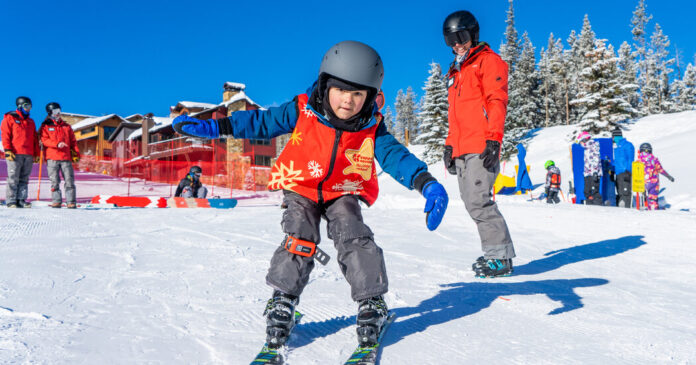McCoy Park is only one of the mid- to high-elevation zones that resorts are creating to make sure beginners and intermediates have a good time and become repeat customers. This season, Steamboat in Colorado is opening a learning area, Greenhorn Ranch, at the mid-station of the new Wild Blue gondola. Also in Colorado, Copper Mountain has been fine-tuning its Western Territory, where the runs off the Timberline and Lumberjack lifts are all green and blue. Copper Mountain benefits from a geological quirk that had concentrated most of the gentle terrain on its west side, but the resort has also given nature a bit of a push, cutting, for example, gently graded trails to bypass flat traverses that were proving problematic for newcomers. It has also strategically improved its amenities.
“There are food and bathrooms in those areas, so newer skiers don’t have to travel as far to use them,” Todd Casey, a Copper ski instructor and staff trainer, said. “Experts are going to be like, ‘I’m just going to ski down to the bottom, use the facilities and be gone again.’ But that could be an hour’s journey for beginners, so we try to make sure we have those options available for them on the mountain.”
Rethinking the base map
Many resorts have grown in a haphazard way over the decades: adding a lift here, a dining hut there. Now, many try to think more holistically and integrate the various parts of their operations as smoothly as possible. While smaller hills still kick it old school — and that is a big part of their charm — many of the bigger resorts are putting a lot of thought, effort and money into making the process more user-friendly, especially for those new to snow.
So the bus from the parking lot now stops near the rental shop, “and then the ski-school meeting area is close to that,” Mr. Casey said. “We try to walk beginners through the process from the rental shop on: If they signed up for a lesson, we try to put an instructor in the shop while they get their gear.”
Employees, from ski instructors to the groomers who run the big machinery, also need to be on the same wavelength to maximize their efforts and make sure, for example, that areas favored by beginner lessons are well groomed. “Ski instructors love to talk to people, that’s what they do for a living, but cat operators don’t like to talk — that’s why they work in the middle of the night by themselves,” Mr. Hession said. “So a lot of the work we do is helping people listen and talk to each other.”
The payoff is to make newcomers understand that snow sports can be a lifelong pleasure, and one of the rare pastimes that can be enjoyed by many generations together. “It is so critical that we make our processes easier to navigate and that we stay patient,” said Adrienne Saia Isaac, the director of marketing and communications for the National Ski Areas Association. “We were all new at something at one point!”
Follow New York Times Travel on Instagram, Twitter and Facebook. And sign up for our weekly Travel Dispatch newsletter to receive expert tips on traveling smarter and inspiration for your next vacation. Dreaming up a future getaway or just armchair traveling? Check out our 52 Places for a Changed World for 2022.
Credit: Source link

















